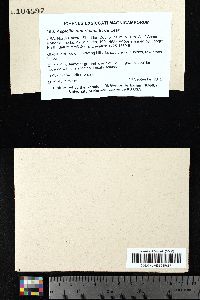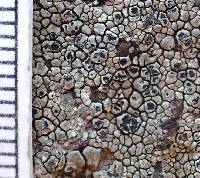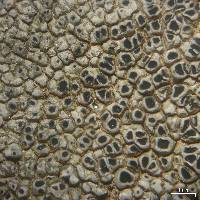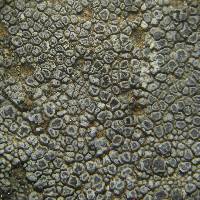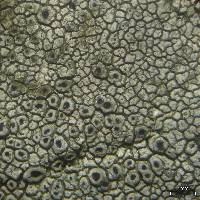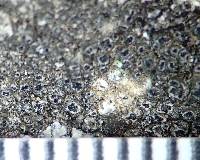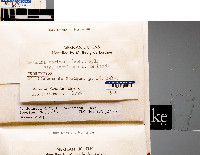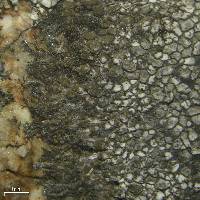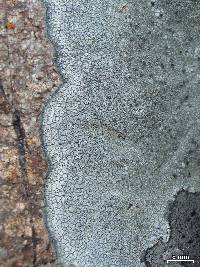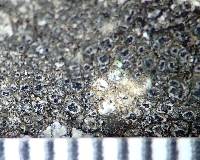
Consortium of Lichen Herbaria
- building a Global Consortium of Bryophytes and Lichens as keystones of cryptobiotic communities -
- Home
- Search
- Images
- Species Checklists
- US States: O-Z >
- US National Parks
- Central America
- South America
- US National Parks
- Southern Subpolar Region
|
|
|
|
Family: Megasporaceae
[Lecanora americana (B. de Lesd.) Zahlbr.] |
Nash, T.H., Ryan, B.D., Gries, C., Bungartz, F., (eds.) 2004. Lichen Flora of the Greater Sonoran Desert Region. Vol 2. Thallus: crustose, rimose or warted-areolate areoles: mostly isodiametric, sometimes irregular in outline, 0.10-0.15 mm in diam., weakly to strongly convex, ecorticate but sometimes with a loose unorganised alga-free layer of various hyphae; surface: light gray or beige to pale brown, with a yellow tinge, esorediate Apothecia: single or in small groups, rarely crowded, rounded to slightly irregular, rarely tuberculate, sessile with a constricted base, 0.45-0.75(-1) mm in diam. disc: pinkish ochre to orange-brown, dull, finely white pruinose, flat to moderately (rarely strongly) convex margin: concolorous with the thallus, only slightly prominent when young, soon excluded or reduced to a non-prominent rim, sometimes missing from the beginning, hardly any terpenoid crystals visible even in old specimens, without a parathecial ring amphithecium: present, with an algal layer, composed of hyaline, short-celled hyphae with lumina 1-2 µm wide, densely filled with small brownish granules (some collections with additional cylindrical crystals 2-4 x 5-10 µm, both soluble in K), laterally 55-80 µm wide, basally 65-120(-180) µm wide, ecorticate parathecium: hyaline, 20-40 µm wide epihymenium: ochre to orange-brown, often streaking far down into hymenium, granular, 10-15 µm thick hymenium: hyaline or pale yellow, 45-55 µm tall; paraphyses: simple or weakly branched and anastomosing, hyaline, with lumina 0.7-1.2 µm wide, apically 1.0-1.2(-1.5) µm wide; subhymenium: hyaline, 35-70 µm thick; hypothecium: hyaline, (40-)60-105 µm thick asci: clavate, 8-spored ascospores: hyaline, simple, narrowly ellipsoid to ellipsoid, (8.5)10.5-12.3(-15) x (3.5-)3.9-4.5(-5) µm Pycnidia: not observed Spot tests: thallus K-, C-, KC-, P- Secondary metabolites: usnic acid, ±zeorin. Substrate and ecology: on wood and bark of pines at higher elevations World distribution: central to northwestern Mexico Sonoran distribution: Baja California Sur and Sinaloa. Notes: In L. confusa, L. perconfusa and L. substrobilina the apothecia are larger than those of L. americana. Also L. confusa contains xanthones and has slightly broader ascospores while the ascospores in L. perconfusa are usually longer and narrower. Lecanora strobilina differs by having decarboxysquamatic acid. |
|
|
|
Powered by Symbiota










